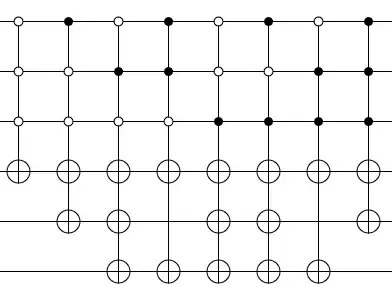So, my understanding is that you're asking for a full computational protocol, with a classical answer, for which there is a separation in classical and quantum running times.
First off, we know that we cannot answer that question directly. Nobody has proved for any circuit (except with the help of an oracle) that there is an exponential quantum-classical separation. Let alone commuting circuits.
So, this next question is how strongly do we believe a separation exists, and are there any candidate problems for which there may be a separation? It seems that a separation probably does exist, as indicated by these two papers:
These papers, particularly the second, also give candidate problems to do with sampling particular probability distributions, one related to the Ising model, and one related to the "gap" of a degree 3 polynomial (the difference in the number of solutions to the two equations $f(x)=0$ and $f(x)=1$).
